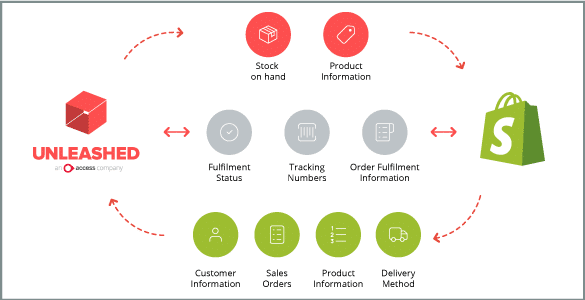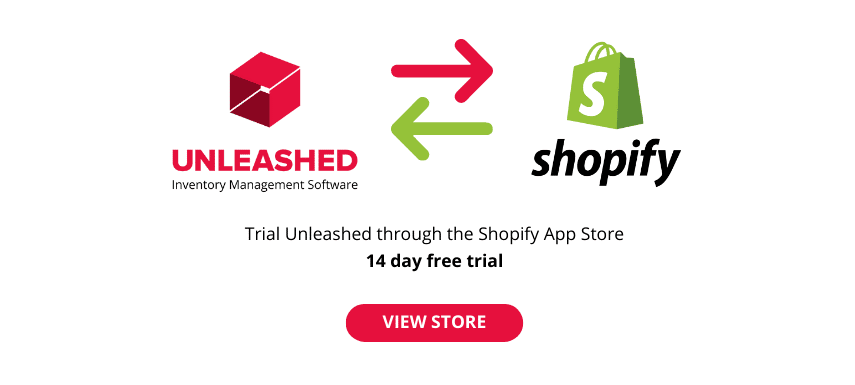
Should SMEs use digital sales channels alongside their traditional brick and mortar stores, outbound sales teams and partner channels? And if so, which digital sales channels are best?
Whether you’re a manufacturer, distributor or retailer, digital sales platforms are likely a wise move for your organisation.
Let’s dig into the benefits and challenges of digital sales channels, show some examples, and talk about how to implement them.
In This Digital Sales Channels Guide:
What is a digital sales channel?
A digital sales channel is where your customers buy your products online.
- It might be through a B2B sales portal that lets your on-account customers order digitally.
- That might be selling via an eCommerce store attached to your website that runs on a platform like Shopify or Squarespace.
- It could mean selling on one of the established online marketplaces – whether B2B or B2C.
- Or it could involve selling direct to consumer using social commerce.
We’ll go into more detail on the different sales channels below.
 Adding new digital sales channels can give you access to new customers.
Adding new digital sales channels can give you access to new customers.
Why should SMEs use digital sales channels?
Switching to digital channels is not an if, it’s a when. That when, for most companies, is now.
The reality is digital sales channels are becoming increasingly the expectation, not the exception – and the news is the same across countries large and small – and for B2B sales as well as B2C.
For example, in the US, total eCommerce sales hit the highest point on record in 2021 and are on track to do it again in 2022 (Oberlo). Even in a tiny country like New Zealand, while in-store retail spending rose just 1% in 2021, online spending grew 52% (NZ Post).
There are a great many benefits to adopting digital sales channels as a smaller business, but it’s a big change - and that change comes with new challenges. Let’s explore some of each to give you a more complete picture of what digital sales could mean for your organisation.
The key benefits of digital sales channels for SMEs:
- In-built audience: Many in-built all online selling platforms (other than those that you would host on your own website) have in-built audiences that are already highly loyal. Anyone selling via these platforms therefore gains access to those pre-primed customers.
- Trade across regions: Selling online opens up a variety of international markets without the typical costs of expansion – market penetration, logistics channels, demand – often it’s all there already thanks to companies like Alibaba and Amazon.
- Cost-effective marketing: It can be easier to scale through a digital platform, because the cost of digital marketing is usually lower, more targeted and more flexible.
- Can open doors to retail deals. Today a key strategy for small businesses wanting to win retail deals is to first launch over a digital sales channel to build brand momentum. It’s far easier to win a supermarket deal, say, with a product that already has an established customer base and recognised branding.
- Cost-effective stock control. When entire your supply chain is digital – right from the marketing to the sale, through to pick, pack and dispatch – then you are much closer to what stock your business needs to fulfil its order. Buying stock on a just-in-time model – or even drop-shipping – become much easier and lead to major cost-savings compared to holding stock on a just-in-case basis.
- Lower labour & rental costs. Staff and rent are some of the biggest costs for product-based business. If you can sell more products online without taking on more staff and shop space then your profit margins will go up. Some businesses that sell over digital channels start to view their brick and mortar ‘flagship’ stores more as a branch of their marketing and a way to power online sales, rather than a core sales channel.
Dreaming of an easy eCommerce inventory system?
See multi-channel eCommerce inventory management in action Learn moreSome challenges of digital sales channels for SMEs:
- High competition: Online platforms are full of SMEs in all niches and from all countries. Depending on your market sector and individual products/services, this may mean that you face extraordinary competition in the war for attention. It’s a buyer-led market, often driving prices down.
- May require new talent: While there are many digital platforms that have been set up to be easy to use, most will require new digital skills – whether to get set up, integrate them into your business, operate them efficiently, or to market them in new ways.
- Increased cyber security requirements: If your business wasn’t previously handling financial transactions online, but now it is, there will be extra data privacy and protection measures you may have to take in order to keep your customers safe.
- Fulfilment challenges. If you suddenly begin selling in lots of different places you may need help with new fulfilment partners in new regions.
- Back-of-business challenges. Selling over digital sales channels can alter the way you do business. It’s one thing to send a single customer a thousand jars of product on one pallet – and quite another to pack and deliver a thousand jars to a thousand individual buyers.
- Messier margins. All of these changes can make it harder to ensure that your business remains profitable – and that you’re making the right decisions around where to run promotions. The ability to track your margins accurately by channel and location becomes more important the more digital sales channels you use.
 B2B eCommerce is often overlooked, but can be as – or more – important a sales channel as a B2C eCommerce store.
B2B eCommerce is often overlooked, but can be as – or more – important a sales channel as a B2C eCommerce store.
The 3 most important digital sales channels for SMEs
eCommerce – B2B and B2C
eCommerce is the act of selling your goods or services via the internet. In this case, through your own website (we’ll cover selling through third-parties below).
How does eCommerce work?
At its most basic, a direct eCommerce sales channel involves building a digital shopfront on your website through which you can sell products and services. Customers who visit your shop can then browse your items, learn more about them, possibly read reviews from other customers, make a purchase, and organise shipping (if applicable).
What will you need to get started in eCommerce?
- A modern website: Your website will become your new shop front, which means it needs to look appealing and work effectively. Colour and layout are of course part of it, but also mobile functionality, page loading speeds, SEO, UX, and all the various technical components that make a website ‘good’.
- An eCommerce platform: This will connect to your website and handle the shopping experience including the checkout process and transactions. The most common include Shopify, WooCommerce and Magento.
- A payment gateway: A payment gateway is a system that facilitates online payments between you, your customers, their credit/debit card companies and your respective banks. Payment gateways also often host other payment options, such as Buy Now/Pay Later, account to account payments, mobile wallets, and so on. Many platforms include these by default. Stripe, Ayden and PayPal are payment gateway examples.
eCommerce pros
- Establish relationships directly with your customers without the need for a brick-and-mortar store.
- Keep more profit – no handing over a cut to a third party (barring transaction fees)
- More control – it’s your sales channel, so you decide how it works. No more negotiating for better shelf space at the supermarket or other stores.
- Solve problems directly with customers, with no intermediary to go through.
 With no middle man taking a cut, your profit margins via eCommerce sales channels can be higher
With no middle man taking a cut, your profit margins via eCommerce sales channels can be higher
eCommerce cons
- The investment required – not just to establish the channel from a technical perspective, but to get the word out and build enough trust among customers that they are willing to buy from you directly.
- You manage everything – sales management, warehousing, logistics and freight, accounting, cyber security – it’s all up to you.
- Dealing directly with customers can be a drag on your time.
Can B2B SMEs also sell via eCommerce?
Yes. In fact, the B2B eCommerce market found a whole new lease of life during the Covid-19 pandemic as numerous manufacturers realised they could be selling through digital sales channels.
Types of B2B eCommerce
- Wholesale: Selling your bulk goods directly to businesses.
- Direct-to-consumer: Selling goods straight to end customers.
- Digital distribution: Switching to an eCommerce business model to help sell goods in a more streamlined way.
Learn more: Opening a B2B eCommerce store
Online marketplaces
This is a general term for any digital sales website that allows third-party sellers (that’s you) to make an account, set up a store and start selling. Examples include:
B2B online marketplaces:
- Alibaba
- Amazon Business
- TradeKey
- eWorldTrade
- EuroPages
B2C online marketplaces:
- Amazon Marketplace
- eBay
- Not On The High Street
- Etsy
- Allegro
- Alibaba (Tmall specifically)
How do online marketplaces work?
Every platform has its own requirements. However, broadly speaking, they’re fairly simple: create an account (with or without an approvals process), set up your store, input a few financial details, upload your products, and start selling.
Of course, to get attention you will need to start marketing too. Many platforms (like Amazon) have built-in paid advertising so you can get the word out.
Online marketplace pros:
- Take some of the load off. The marketplace is in charge of managing key elements of the online sales process, such as financial transactions, data privacy and website maintenance.
- Built-in audience, including international audiences. As we mentioned earlier, there are built-in audiences, which bring down the costs of expansion.
- It’s easy. Sites like Amazon Marketplace are practically ‘plug and play’ - they’re designed to be simple to establish, taking a lot of the technical side of eCommerce out of the equation.
Online marketplace cons
- Fees - these companies will all take commission fees on your sales, cutting into your profits.
- You’ll lack control. On an online marketplace, your business is subject to the changing whims of the company. It could change its policies on fees, advertising, what products it does or does not allow, and any one of these changes could lead to lost business or the termination of your account.
- Data integration is another big one. If you’re selling on a marketplace and on your own website (or any other digital channel), you must ensure that each store is interconnected so that your stock levels are always updated in real time. That way you can’t accidentally sell a product on one channel that you already sold on another.
 Trading via an online marketplace can remove logistics and warehousing hassles.
Trading via an online marketplace can remove logistics and warehousing hassles.
Social commerce
Social commerce is the act of selling goods directly through social media platforms - Facebook, Instagram, TikTok, Snapchat, these apps and more have a variety of commerce features, with more being added all the time.
How does social commerce work?
As with online marketplaces, it depends on the app. For Facebook and Instagram (which are the two largest right now), you can essentially use them like an online marketplace - loading your products into your ‘Shop’, sharing them with your followers, and facilitating transactions through the app.
Social commerce pros
- Reduce purchase friction by selling to your customers directly through the apps they’re already using. There’s no need to ask them to leave the app to go to another store.
- Reach more customers by utilising built-in sharing and discovery features already in the app. For example, you could talk about your products in videos which users can share, like and comment on, helping other users find them.
- Built-in social proof - if users can comment about their excitement for a product, share news about it, or even upload videos of their unboxing or using of your goods, it helps build trust among other users who will then find your store on your profile.
Social commerce cons
- There’s a lot of competition on social media. Not only will you be competing with other SMEs, but also major enterprises with massive marketing budgets, plus independent influencers who want to sell their own products on the same platform.
- You’ll require a social-savvy audience for it to work. If your brand sells goods which just aren’t appealing to a social media audience (which tends to skew younger, rather than older), you may not find a sufficient customer base through social commerce.
- Each social platform has its own audience. This may lead to increased market research costs (and trial and error) as you try to find where your audience actually likes to hang out.
Learn more: What Is Social Commerce? [+ The Pros, Cons & Best Platforms]
 Social commerce channels can make for seamless buying journeys.
Social commerce channels can make for seamless buying journeys.
How to decide which digital sales channels to use
We can’t tell you which digital sales platform is going to be right for your business. That said, every business has to consider the same questions when deciding which channel is best for their unique needs. So, ask yourself about:
- Competitors: What are they doing? Where are they pushing? What can you learn from their experience?
- Audience: Where do your customers (or potential customers) like to shop, or hang out online? What is their familiarity with these different platforms? What are they comfortable with?
- Expertise: Do you have the in-house expertise to establish, run, maintain and market on these platforms? Will you need to hire new staff or contractors?
- Fees and costs: Can you afford the commission fees or admin fees of certain platforms? What is your budget for technology costs, such as building a new website, licensing a shopping cart, new digital marketing, and so on?
- Security: Are you set up to keep customer data safe and secure? If not, do you have the available budget to ensure that you are?
- Integrations: Which platforms will integrate best with your existing inventory management system, customer database and accounting platform? Do you need to make new software investments before moving to a digital sales channel?
- Ownership: How much will you ‘own’ your digital shop? Is that important to you? What customisation and branding options are there?
- Future plans: Where do you see your business going, in terms of expansion and growth? Will you require scalability? Are you moving into new regions or markets?
Which software integrations will you need to run a digital sales channel?
If you’re moving to a digital sales channel, you should know that smooth software integration across systems is vital for success. This will help you create a truly omnichannel eCommerce experience, which will help you run an efficient business with an enjoyable customer experience. Get this wrong and it could lead to problems down the road.
What does ‘software integration’ mean?
Your different software platforms must be able to communicate with each other, preferably in real time. That means they all speak the same language, from a data perspective (i.e. the data one platform sends, the other can understand), and they actively share information with one another.
 A good integration ensures your business software shares the right data.
A good integration ensures your business software shares the right data.
It might be easier to understand with an example...
Let’s say you sell via your own eCommerce platform, but you also have a few brick and mortar stores. The online shopping cart and the physical stores are going to be selling stock from the same warehouse.
In a world where your systems are not integrated, someone could buy a product online roughly around the time someone else buys the same item in-store. However, with only one item left in stock and no communication between systems, two customers have bought the same item – meaning you’re going to have to explain to one customer how you allowed them to buy an item that didn’t exist, or else source the online customer a new item with a much longer lead time than they expected.
In a world where the systems are all integrated, as soon as the individual online purchases their item it updates the inventory management system, which tells the physical store that the item was no longer available.
Common software systems you’ll need to get into digital sales
1. Inventory management
This is one of the most important software tools for businesses adding digital sales channels. An inventory management system helps you understand stock levels, in real time, and communicate that information with all sales platforms both physical and digital.
With features like expiry tracking and automatic reorder points it helps you maintain the stock levels that you need, and save you spending on stock that’s not needed.
- Learn more: Inventory Management For Small Business
2. CRM
A customer relationship management (CRM) system is your go-to place for all things related to sales and customers.
CRM tools are a central dashboard for sales, marketing and customer service teams. They track all information related to individual customers, their purchase histories, current order statuses, outstanding issues, and marketing-relevant info (such as whether or not they're on the mailing list).
You can use a CRM database to help you optimise your customer experience – tracking feedback, improving service, and increasing the lifetime value of your VIPs.
A good stock-aware CRM will also help you plan your purchasing based on what deals your sales teams have in their pipeline.
3. Shipping and logistics
Where are your items, where are they meant to go, and have they arrived yet?
These are important questions, and without answers you can quickly lose track of your goods and frustrate customers.
Shipping and logistics platforms help you understand common freight charges for your goods, automatically apply this information to sales totals, print shipping labels, track inventory, and email or text customers with updates.
You can sometimes find these systems alone, or packaged together with inventory management or sales order processing suites.
4. Accounting
If you haven’t already, this is your opportunity to simplify and automate your financial processes.
A modern cloud accounting platform is generally capable of quite a lot of hugely valuable tasks. Visualising income data, generating profit/loss reports, automated reconciling of your books, handling invoices and salaries, and calculating all manner of data points – wastage, cost of goods sold, profit margins ... the list goes on!

